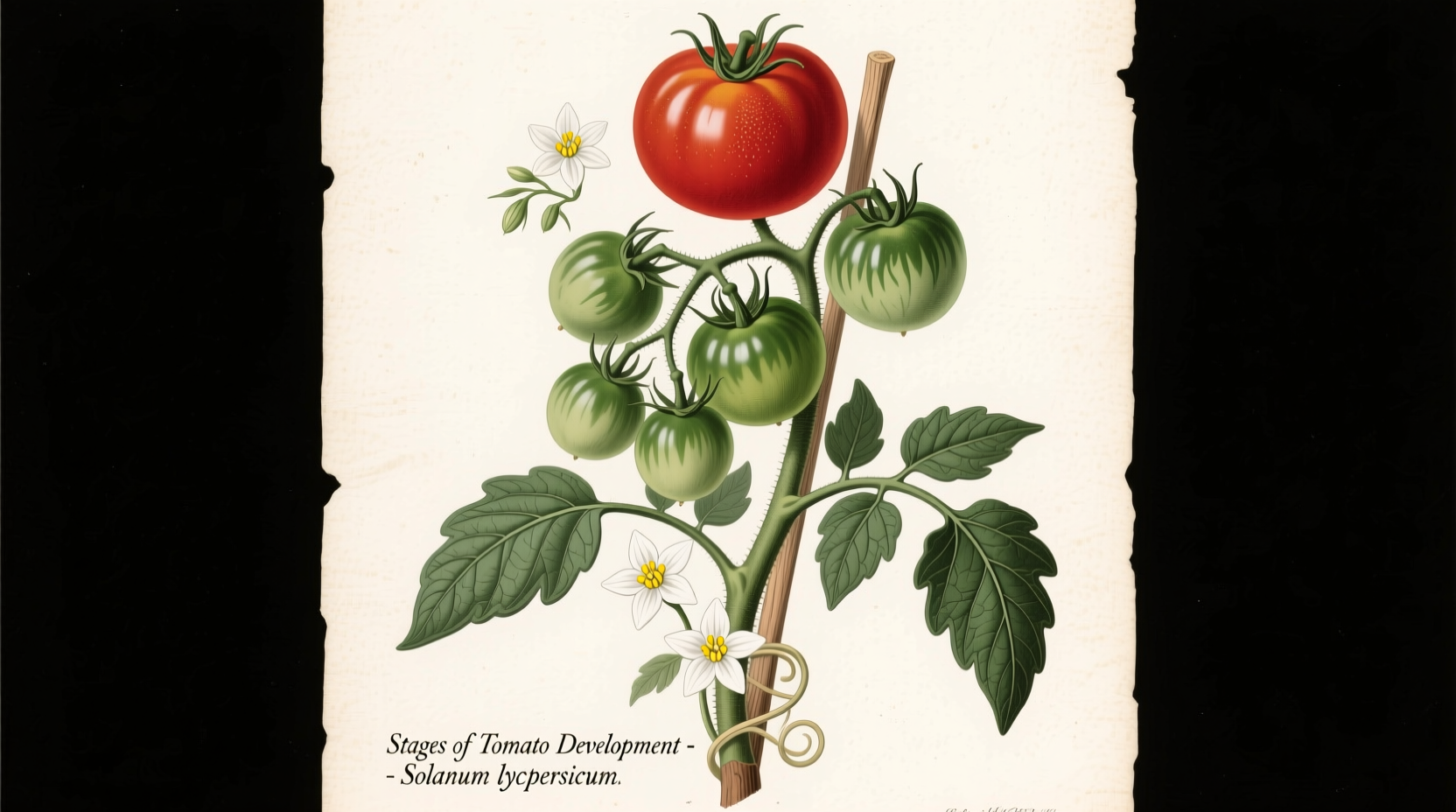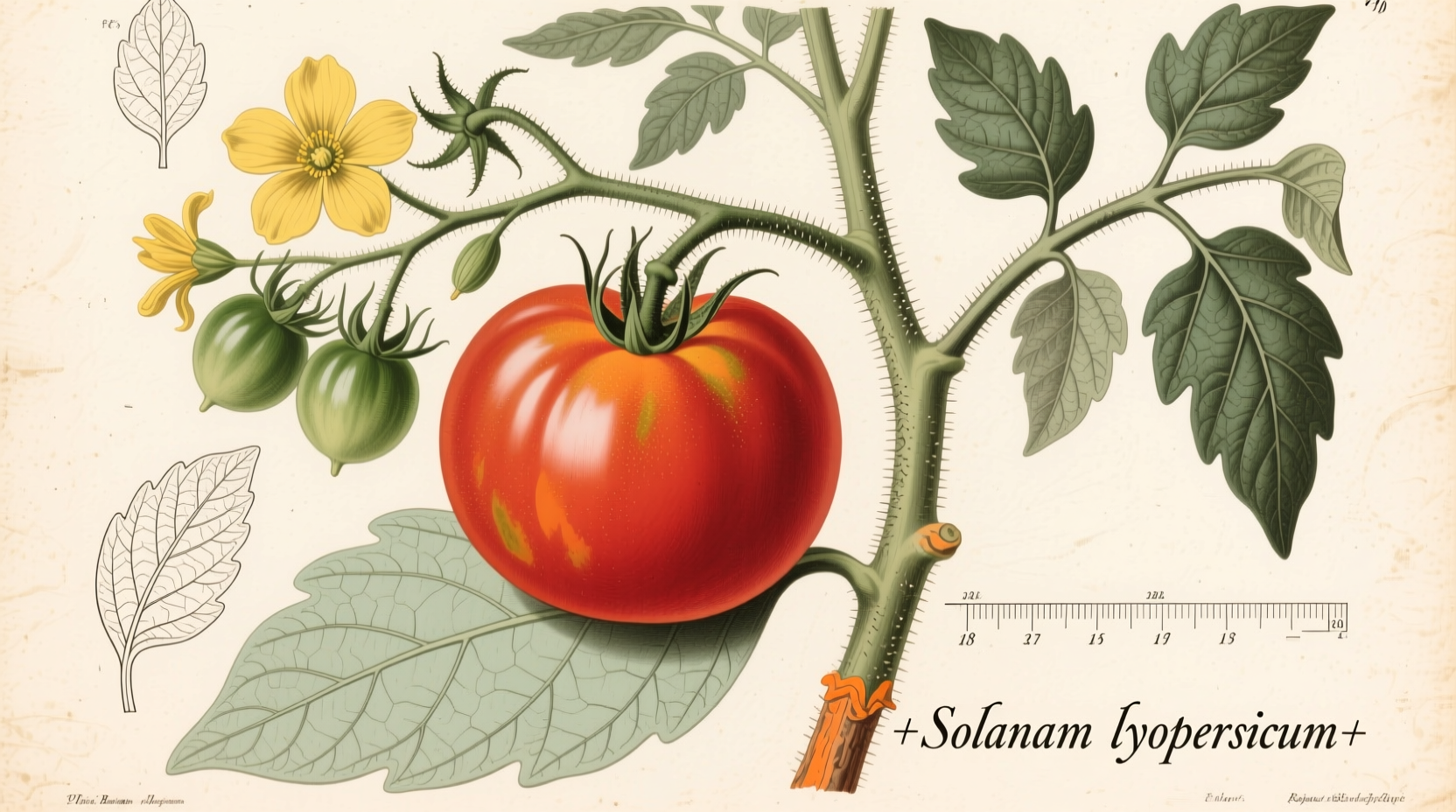The scientific name for tomato is Solanum lycopersicum. This binomial nomenclature precisely identifies the cultivated tomato species in botanical classification systems worldwide.
For gardeners, chefs, and plant enthusiasts, knowing the precise scientific designation of tomatoes isn't just academic—it's practical knowledge that affects everything from seed selection to understanding plant relationships. Whether you're planning your garden, researching heirloom varieties, or simply curious about that juicy fruit on your plate, the correct botanical identification matters more than you might think.
Why Scientific Names Trump Common Names
"Tomato" means different things across languages and regions, creating confusion that scientific nomenclature solves. While common names vary—"pomodoro" in Italian, "jitomate" in Mexican Spanish—the binomial Solanum lycopersicum provides universal clarity. This standardized naming system, established by Carl Linnaeus's classification principles, prevents misidentification that could lead to gardening mistakes or even safety concerns with related nightshade plants.
| Classification Level | Tomato Designation | Significance |
|---|---|---|
| Kingdom | Plantae | Confirms tomato as a plant species |
| Clade | Tracheophytes, Angiosperms, Eudicots, Asterids | Shows evolutionary relationships |
| Order | Solanum lycopersicum | Places tomato in nightshade family |
| Family | Solanaceae | Connects to potatoes, eggplants, peppers |
| Genus | Solanum | Shared with over 1,500 nightshade species |
| Species | lycopersicum | Unique identifier for cultivated tomatoes |
The Evolution of Tomato Classification: From Lycopersicon to Solanum
Historical botanical records reveal an interesting taxonomic journey. For over 200 years, tomatoes were classified as Lycopersicon esculentum—a classification that appeared in seed catalogs and agricultural texts worldwide. This changed in the late 20th century when DNA analysis confirmed tomatoes' close relationship to other Solanum species.
According to research published in the American Journal of Botany, molecular phylogenetic studies demonstrated that tomatoes shared more genetic markers with potato (Solanum tuberosum) than previously recognized. This scientific evidence prompted the International Code of Nomenclature for algae, fungi, and plants to officially reclassify tomatoes under the Solanum genus in 2008—a change now reflected in authoritative databases like the USDA Plants Database and the International Plant Names Index.

Practical Implications for Gardeners and Cooks
Understanding the scientific name Solanum lycopersicum provides tangible benefits:
- Garden planning: Knowing tomatoes belong to the nightshade family (Solanaceae) explains why crop rotation with potatoes or eggplants is inadvisable
- Varietal selection: The scientific name helps identify true heirloom varieties versus modern hybrids when purchasing seeds
- Pest management: Shared vulnerabilities with other Solanum species inform integrated pest management strategies
- Culinary applications: Understanding tomato's botanical relationships explains flavor affinities with other nightshades
Common Misconceptions About Tomato Classification
Several persistent myths surround tomato taxonomy:
Myth: "Tomatoes are vegetables"
Fact: Botanically, tomatoes are fruits (specifically berries), though legally classified as vegetables in the 1893 Nix v. Hedden Supreme Court case.
Myth: "All tomatoes share the exact same scientific name"
Fact: While Solanum lycopersicum refers to cultivated tomatoes, wild relatives like Solanum pimpinellifolium (currant tomato) have distinct classifications.
Myth: "The scientific name changed because of political reasons"
Fact: The reclassification from Lycopersicon esculentum to Solanum lycopersicum resulted from conclusive DNA evidence documented in peer-reviewed journals like Taxon and Molecular Phylogenetics and Evolution.
When Scientific Names Matter Most
For casual conversation, "tomato" suffices, but precise identification becomes critical in specific contexts:
- Seed saving and heirloom preservation: Correct identification ensures genetic purity
- Agricultural research: Scientific papers require precise taxonomic references
- Plant disease management: Pathogens often target specific taxonomic groups
- International trade: Customs regulations use scientific names to prevent invasive species
University extension services like those from Cornell and UC Davis consistently use Solanum lycopersicum in their agricultural recommendations, demonstrating the practical importance of accurate botanical identification.
Tomato Varieties and Their Scientific Designations
While all cultivated tomatoes belong to Solanum lycopersicum, breeders have developed numerous varieties with specific designations:
- Solanum lycopersicum var. cerasiforme - Cherry tomatoes
- Solanum lycopersicum var. pyriforme - Pear-shaped tomatoes
- Solanum lycopersicum var. esculentum - Standard round tomatoes
These botanical variety designations help distinguish growth habits and fruit characteristics beyond common marketing names like "Roma" or "Beefsteak." The Missouri Botanical Garden's horticultural database maintains comprehensive records of these classifications for research and cultivation purposes.
Connecting Botany to Your Kitchen
Understanding that your tomatoes belong to the Solanum genus explains culinary synergies. The shared chemical compounds between tomatoes, potatoes, and eggplants create flavor bridges that inform recipe development. Chefs who understand these botanical relationships can create more harmonious flavor combinations by leveraging the natural affinities between related plants.
Next time you're selecting tomatoes at the market or planning your garden, remember that Solanum lycopersicum represents more than just a name—it's a gateway to understanding tomatoes' evolutionary history, agricultural requirements, and culinary potential.











 浙公网安备
33010002000092号
浙公网安备
33010002000092号 浙B2-20120091-4
浙B2-20120091-4